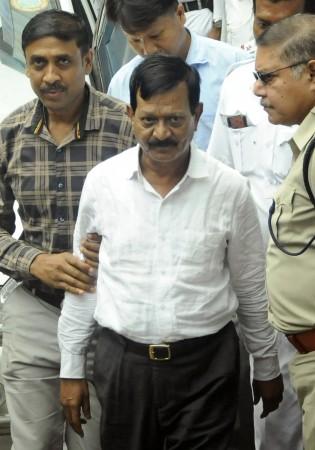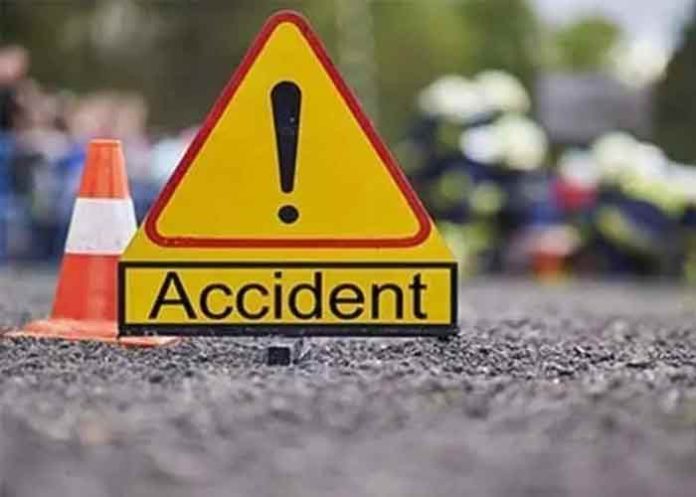
JUST TWO IRISH companies hold a significant stake in the numerous offshore wind projects currently in the pipeline off the Irish coast. ESB and Kerry-based wind energy developer Saorgus Energy are involved in two separate projects, but neither is the lead developer. This means one of Ireland’s most lucrative natural resources is being sold to a range of foreign investors looking to make a profit.
analysed financial records to uncover the ultimate controlling parties behind the offshore wind projects. Among the companies that hold a controlling interest in offshore wind projects are oil and gas companies as well as RWE, a German multinational energy company — one of Europe’s largest CO2 emitters over the last five years. Greenpeace has labelled investments in offshore wind by fossil fuel companies as greenwashing, pointing to their continued high use of polluting fuels.

Norwegian and French state-owned companies are also investing in Ireland’s offshore wind, as are the Ontario Teachers’ Pension Plan fund, which previously owned the Irish National Lottery. The Irish government has committed to achieving at least 5 GW (gigawatts) of installed offshore wind capacity by 2030. That equates to 5,000 MW (megawatts) and is a huge jump from the 25 MW currently installed at Ireland’s only offshore wind farm, located off Arklow.
This is part of its wider goal of reaching an 80% share of renewable electricity and reducing greenhouse gas emissions by 51% by 2030. An offshore wind strategy, published by the Department of Enterprise, states that international and foreign investment is a “competitive necessity” in developing the offshore wind market and achieving the climate objectives. Half of the six projects that are furthest along in development are backed by fossil fuel companies, according to an analysis by .
One of these is the Oriel Wind Park project, based off the coast of County Louth. Planning permission has been submitted by the developer for 25 turbines, with a maximum capacity of 375 MW. The developers say that this project will be able to power 300,000 houses with renewable energy.
That is more than all the houses in Co Cork. The project is ultimately controlled by a partnership between Japan’s largest power generation company, JERA, and oil company, BP. The ESB is listed as a partner for the project, but they do not hold a controlling share, according to the planning documents reviewed by .
Another offshore wind farm project that has ties to large polluters is the Dublin Array. Located along the Dublin and Wicklow coasts this project is a 50:50 partnership between German multinational energy company RWE and Irish wind farm developer Saorgus Energy. However, a spokesperson for RWE Renewables Ireland, the Irish arm of the company, told that the development is being led by RWE.
Alongside its renewable energy projects, RWE also operates coal and gas power plants across Europe, releasing vast amounts of CO2 emissions. Planning permission has not yet been submitted for this project, but published proposals say that it will have between 39 and 50 wind turbines, generating a total project capacity of up to 824 MW. A third project is backed by a partnership between French-state-owned energy company EDF and Bonheur ASA.
The latter is a Norwegian holding company controlled by Fred Olsen & Co, the private investment vehicle of Norwegian billionaire Anette S Olsen whose family originally made their money through shipping. The Codling Wind Park, located off the Wicklow coast is the largest offshore wind farm that has submitted planning permission with 1,300 MW capacity. This project alone represents a quarter of the government’s 2030 target for offshore wind.
As with BP and RWE, EDF is active in a range of power generation technologies, including fossil fuels. Some argue that the involvement of these fossil fuel and energy companies amounts to greenwashing, pointing out that these renewable projects often feature prominently in marketing while the companies continue to emit vast amounts of CO2. “I wouldn’t misinterpret these investments as a shift in the business model.
Definitely not,” Lisa Göldner, the lead campaigner of Greenpeace’s European climate and energy campaign, told : She added that these companies “are securing their shares in businesses that might only start in years or decades to come” and that given the percentage of renewable investments as part of their overall portfolio, in her mind they are “definitely greenwashing”. A spokesperson for RWE Renewables Ireland told that “RWE is committed to the 1.5°C Science Based Targets initiative”.
They said the company has set a target to “achieve net zero by 2040 and the phase out of its coal-fired power generation in Germany by 2030”. They also added that the company was investing billions of euro in wind, solar and batteries “with a clear direction of travel for the future”. A spokesperson for BP said that their joint venture with JERA is not yet complete and that it cannot comment on the project as a result.
JERA referred to a statement from an Oriel project spokesperson that said: “The Oriel project is well placed to contribute towards Ireland’s 2030 targets for offshore wind, renewable energy, and emissions reduction.” They also said that it plans to sell the electricity that will be generated into the Irish electricity market. EDF also referred to a statement from the Codling Wind Park project which said: “EDF Renewables is one of Ireland’s leading renewable energy companies and is committed to working closely with the Government and local communities to help deliver 80% of Ireland’s electricity from renewable sources by 2030.
” Ireland’s offshore wind resources have also attracted large multinational investors in renewable energy. The North Sea Array, a 700 MW wind farm located off the coast of Dublin, Meath and Louth, is backed by a joint venture between Statkraft and Copenhagen Infrastructure Partners, a Danish investment firm that focuses on investments in green energy projects. Statkraft is a hydropower company, fully owned by the Norwegian state.
The company also invests in wind and solar, owning wind farms in Germany and France. A spokesperson for the project said Statkraft teamed up with Copenhagen Infrastructure Partners to “ensure the successful delivery of a project of this scale”, adding that it would “deliver significant investment to local communities”. Dr Rory Monaghan, a lecturer of mechanical engineering at the University of Galway, said that part of the reason why these projects are backed by large multinational energy companies is because many of them have the expertise required to construct these projects.
“They would all have experience of building offshore wind farms in the North Sea,” he added, saying that Ireland’s port infrastructure also isn’t suitable for offshore wind turbine assembly and that many of these companies would already have existing supply chains through UK ports. According to a 2022 report by industry lobby group Wind Energy Ireland, Belfast is currently the only port on the island of Ireland that is fully equipped to construct offshore wind farms. By 2030, the Port of Cork hopes to also support offshore wind farm construction, following recent investment.
The majority of the projects currently in the pipeline are situated along the east coast, particularly along the Wicklow and Dublin coastline. Just one project, Sceirde Rocks, is based on the west coast. This, Dr Monaghan explains, is due to the rough sea conditions and deeper water that present additional engineering challenges for projects on the west.
The Sceirde Rocks project, he said, is a unique case as it is partly sheltered by Galway Bay and there are shallower waters around that part of the coast. This project is backed by a joint venture between offshore developer Corio Generation, which is owned by an Australian investment bank, and the Ontario Teachers’ Pension Plan. The latter may be familiar to Irish readers, having previously owned the company behind the National Lottery, before selling it to French lottery operator Française des Jeux in 2023.
A spokesperson for Corio Generation confirmed ownership of the project, while a spokesperson for the Ontario Teachers’ Pension Plan declined to comment. The last of the six proposed offshore wind farms is on the Arklow Bank, off Co Wicklow. This is the second phase of offshore wind farms in this location.
It consists of 56 wind turbines generating 800 MW of electricity and is being developed by Scottish energy company SSE plc. The current Arklow Bank wind farm in operation (phase one) which has seven wind turbines and a total of 25 MW capacity is to be decommissioned. The operator, Arklow Energy Limited which is owned by GE Vernova, submitted proposals about the decommissioning to An Bord Pleanála last month.
A spokesperson told us it has “reached the end of its operating life” and that they “will work with local officials to complete the decommissioning process in a safe, timely, and responsible manner”. It may be some time before wind turbines begin to appear on our coastal skyline. A number of the developments are experiencing planning delays.
Of the five projects that have submitted planning applications to An Bord Pleanála, three decisions are overdue since December. Industry lobby group, Wind Energy Ireland, said that quick but robust decisions are needed on these projects if Ireland is going to hit its 2030 climate targets. “We cannot afford to have projects spending years in the planning system while families are struggling with their bills and we are spending millions importing fossil fuels,” Justin Moran, Director of External Affairs with Wind Energy Ireland, told He added that while the additional funding provided to An Bord Pleanála to deal with these project applications was welcome, “more is necessary to provide the people and the expertise our planning system needs”.
A spokesperson for An Bord Pleanála did not respond to a request for comment prior to publication. Reporter: • Editors: • Main Image Design:.















